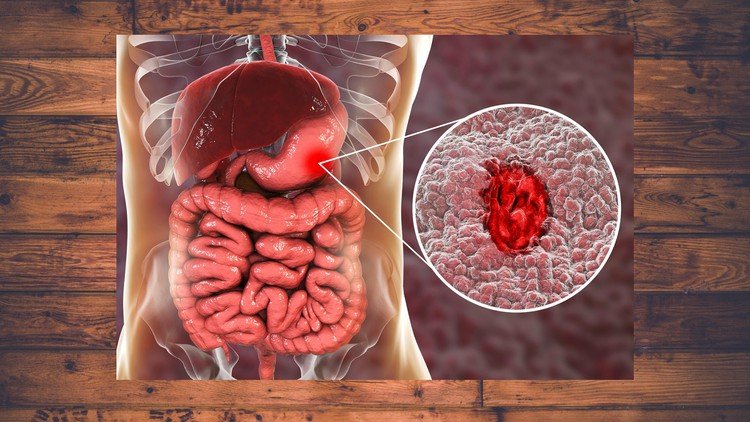In this short course we will understand what is peptic ulcer disease and what is the pathophysiology behind it, how it presents and all modalities of treatment.
مرض قرحة المعدة من الأمراض المشهورة جدا ، تشخيص هذا المرض المنتشر و التعرف على كيفية التعامل معه طبيا من اهم اساسيات المحافظة
على الصحة العامة
شرح تفصيلي لمرض قرحة المعدة يتضمن
1- تشريح المعدة (Anatomy of stomach)
2- وظيفة المعدة (Function of stomach)
3- آلية دفاع المعدة (Stomach defense mechanism)
4- تعريف القرحة (Definition of ulcer)
5- أسباب قرحة المعدة (Causes of PUD)
6- أعراض قرحة المعدة (Presentation of PUD)
7- تشخيص قرحة المعدة (Diagnosis of PUD)
8- علاج قرحة المعدة (Treatment of PUD)
Peptic ulcer disease (PUD) is a infectious disorder. Three major causes of peptic ulcer disease are: peptic ulcers are small sores that form in the lining of the esophagus (swallowing pipe), stomach, or duodenum (the first part of the small intestine). Peptic ulcer disease refers to painful sores or ulcers in the lining of the stomach or first part of the small intestine, called the duodenum. Peptic ulcer disease (PUD), also known as a peptic ulcer or stomach ulcer, is a break in the lining of the stomach, first part of the small intestine, or occasionally the lower esophagus. There are three types of ulcers: peptic ulcers, Apthous ulcers, esophageous ulcer. Causes of peptic ulcer include, administration of NSAID, H.pylori, stress, alcohol habits, Smoke, fasting, radiation. Diagnosis include: endoscopy, x- ray, breath test, urine test, and serological test. Drugs or medication therapy that is used for the treatment of peptic ulcer disease are antibiotics, proton pump inhibitor, histamine antagonist, gastric acid neutralization agent, ulcer protective, antacids etc.













